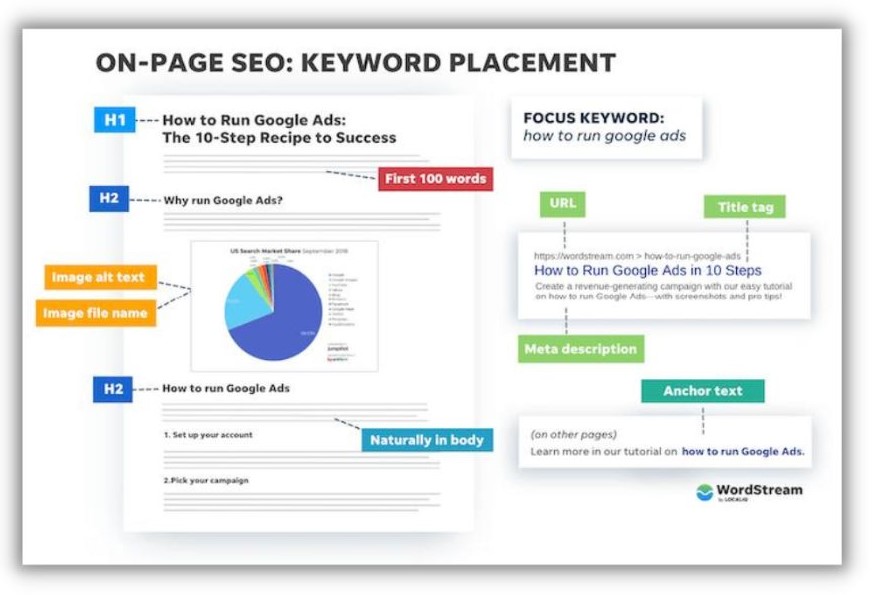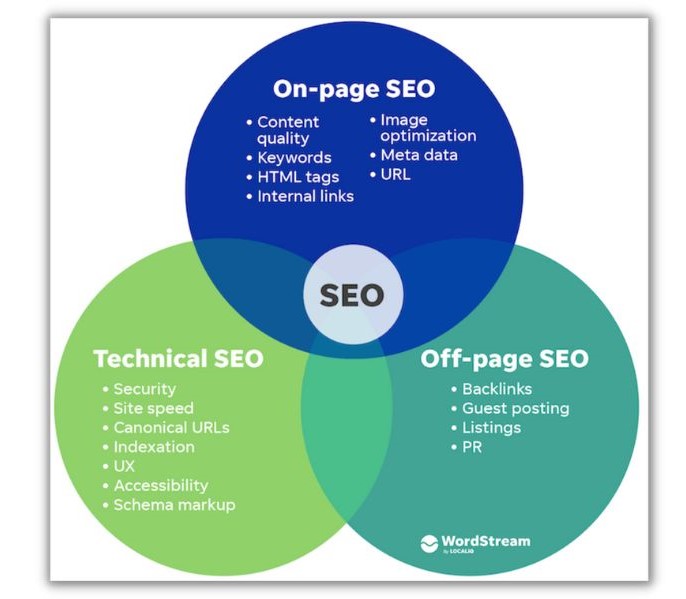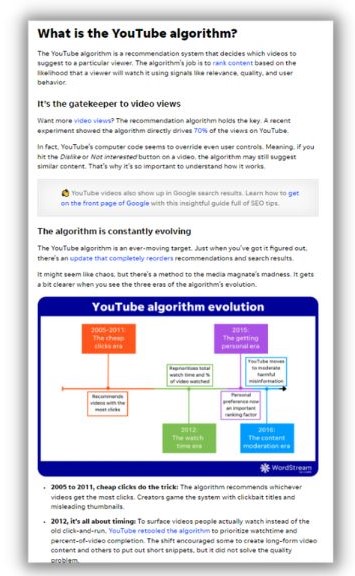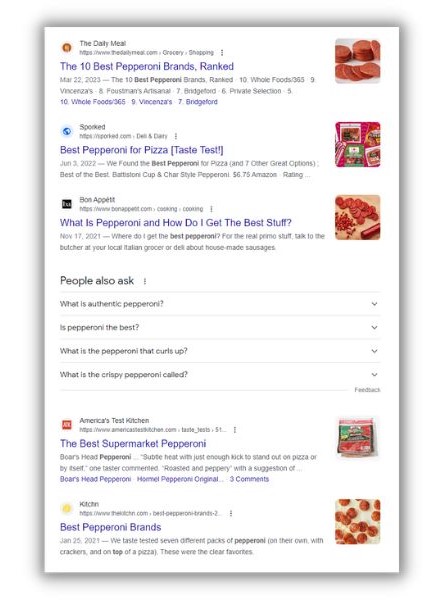PPC
9 Content Optimization Strategies That Increase Traffic (& Conversions!)

A picture is worth a thousand words. But, are words always worth the effort you put into them? You can write the most compelling copy your mind can imagine, but fail to get any traffic via Google, or even conversions from traffic you’re paying to send to the content. Without content optimization, your content is just kind of…there.
Where optimized content ends up
With the right content optimization strategy, you can increase the chances your words drive results for months and years to come, making them worth all the effort and then some. But first, it’s important to understand the basics.
Table of contents
What is content optimization?
Content optimization is the act of refining your content so it performs well with your target audience and gets the results you’re after. In other words, it reduces the chances you’re spending precious time writing content nobody will read—a fate worse than death for any writer!
Oftentimes, content optimization is thought of in search engine optimization (SEO) terms. In this case, content optimization involves keyword research, on-page optimization, and more with the goal of ranking in search engines for relevant queries. But there’s also content optimization for social media, sales enablement, and general conversions.
No matter the type or reason for optimizing content, the end objective is often the same: tweak your content in a way that helps you reach your goals.
Why content optimization matters
Time is money, as the old saying goes. When you’re not optimizing your content for one goal or another, you’re increasing the chances you’re wasting time (and money). On the other hand, when you optimize content, you’re setting yourself up for success with multiple benefits.
Your content is more likely to rank
There’s always a chance a quality piece of content with absolutely no attention paid to optimization ends up performing well on Google. If you optimize your content, though, you’re increasing your chances of ranking.
You can get more mileage out of old content
Content optimization also allows you to reoptimize content that’s no longer performing well. Google algorithms change over time and competition can shift. This can result in your content that was once dominating page one, falling into oblivion.
An added perk, content reoptimization, or content refreshes, are often much quicker than writing a piece from scratch. Who doesn’t want to save time and possibly land a nice spot on Google?
You can get your content in front of the right people
You likely know who your audience is, as well as what it is they want. By optimizing your content—targeting the right keywords, using on-page SEO best practices, etc.—you’re setting your content up to get in front of the audience that needs it (and, in turn, your business!) most.
You can tailor content for specific goals
You might publish top-of-the-funnel content to attract new visitors to your website. Or maybe you share conversion-focused content meant to turn leads into paying customers. No matter what marketing KPI you’re attempting to hit, optimized content will have a better chance of achieving it.
9 content optimization strategies
No two pieces of content are the same, just as no two brands are the same. There are a number of content optimization strategies you can launch, but keep in mind some of them may make more sense for your content or brand at your current stage.
1. Use keywords strategically
Keywords help search engines match your content to the queries people enter. To make sure Google and its competitors know that your content will answer their users’ questions, you’ll need to research which keywords to target and add them to your content.

As you write, ask yourself:
- Is the keyword in the intro paragraph?
- Is the keyword in at least one major header?
- Is the keyword in the title?
- Is the keyword in the meta description?
- Is the keyword contained in the page URL?
Tip: Avoid keyword stuffing! SEO has come a long way since the dark ages of the 2010s. Keyword stuffing is obvious to readers and isn’t doing your SEO any favors. Make your keyword mentions organic, but never excessive.
2. Include meta descriptions and title tags
Like keywords, meta tags are an important part of on-page SEO. Meta descriptions and title tags are types of meta tags that show up on search engine results pages.

Since they’re visible to searchers, these meta tags are critical to content optimization. Make sure your meta titles and meta descriptions include target keywords and are engaging enough to get people to click on your search entry.
3. Ensure your site is technically sound
All the optimization in the world won’t save your articles from a site that’s not technically up to par. This is where technical optimization, the cousin of on-page and off-page, comes into play.

Technical SEO is (surprise, surprise) far more technical than on-page optimization. To get started, do a general checkup of your site and run it through a tool like Google PageSpeed Insights. This will tell you if your site loads quickly, and if there are any glaring issues.
You also need to consider if your site is indexed, crawlable by Google, and more. Cover all your technical bases with our technical SEO audit guide, and get your site up to technical speed in no time.
4. Create internal links to relevant content (and vice versa)
External links, those from other websites, are great for helping your domain authority and chances of ranking. As you create quality content and build your brand, these links will come. But, it’s still important to build out internal links between your content.

Whether you’re creating a new piece from scratch or performing a refresh, go through your site and include links to your new piece within older content (from a relevant spot). Then, do the same for your new piece and link out to other pieces you have, using relevant copy as anchor text.
Internal linking not only helps your SEO, it also provides a better experience for your readers. If someone has a question about something you’re covering, and you have the term linked to a helpful guide, they can easily get the information they need.
Tip: Create a spreadsheet that tracks your articles and target terms with a column that indicates whether you’ve linked from one relevant article to another. It’s easy to lose track of what pieces are linking where, and a spreadsheet goes a long way.
5. Break up the copy for a better reading experience
Nobody likes clicking a link only to find themselves face-to-face with a wall of text. Massive articles with no visuals or breaks in the copy will likely drive your audience away, and quickly. This hurts your bounce rate and ultimately your chances of ranking.
Here’s an article we recently published about the YouTube algorithm.

Notice how the text is broken up by headers, images, and callouts? That’s so our readers can get a break from reading. It also lets people skim an article and jump into the parts that interest them the most.
Again, whether you’re writing a new article or refreshing an old one, make sure you’re giving the reader breaks in the copy. Images are a great way to keep an article flowing, and they provide their own SEO benefits. You can also use bulleted lists, numbered lists, block quotes, and more to keep the article flowing.
“Break up your text with bulleted lists, images, videos, or even block quotes like this one. See how easy that is?”
— John Shieldsmith, Complete Hack Writer
As an added bonus, breaking up the copy simply makes your content more pleasant to read.
6. Double-check search intent before writing
Just because a keyword looks promising, doesn’t mean the intent is the right fit for your brand. This is why it’s important to search a term on Google before you start targeting it in a piece, otherwise, you risk wasting precious time writing an article that won’t perform well.
For example, say you want to educate your audience about pepperoni, seeing as you run an online frozen pizza company. While “best pepperoni” might sound ideal, especially considering you’re writing a guide on how to make the best pepperoni, this isn’t the case. Searching the term brings up a number of commercial articles, all ranking the best pepperoni brands.

By proceeding with the guide and using that term, you’re setting the article up to disappoint readers who click the link, as they’d likely be looking for the best pepperoni brand. This will hurt your bounce rate and again, torpedo your chances of ranking.
Make sure your intent is in line with your audience before you write a single word, using our well-intentioned expert guide on keyword intent.
7. Use relevant images
Images keep your articles engaging but also help your chances of ranking. This is especially true when you use the right images, as they’ll keep your audience engaged. But image best practices don’t stop there.
- Include your own screenshots when possible, as these build credibility with your audience and further establish you in the space.
- Don’t use an image for the sake of using an image. Images should help drive home a point, further inform a reader, or entertain at the least.
- Keep an eye on your number of images. Too many images can bog down your page speed and impact your SEO.
- Compress images using one of the many free tools available. Images should stay right around 100kb, ideally. Anything over that risks slowing your site down. However, your hero image can be a bit larger, along with infographics, as these are top-priority images.
Tip: Run your page through the aforementioned Google PageSpeed Insights and see how quickly it loads. If you’re not happy with the speed, make sure your images are compressed and that you’re not using too many.
8. Use attention-grabbing videos
Follow the same image best practices and include relevant videos when you can. Videos further break up your copy while appealing to other learning and engagement styles.
It’s worth noting that if you’re using a video player and not auto-playing a video, you don’t have to worry about the file size. If you’re embedding the video and loading it straight from your own server, file size can come into play.
9. Prioritize your audience above all else
At the end of the day, your audience is the most important element to consider when writing and optimizing. Put yourself in your reader’s shoes and ask yourself if the article answers whatever question or questions they had when searching the term. Will they walk away from the piece, their life better in some way?
When you’re finished with your piece, ask yourself if the article is something you’re proud to have your name, or your brand, on.
Optimization is ongoing
Optimization is a never-ending race. Rankings or campaign performance can slip at any moment, so it’s important to stay on top of your content and revisit articles when necessary.
Fortunately, there are tools that can help you streamline your optimization efforts. Start by saving yourself precious research time with our free keyword research tool, giving you more opportunities to focus on optimizing your already awesome content and growing your business.
Then, revisit our list of content optimization tactics to keep your content on track:
- Use keywords strategically
- Include meta descriptions and title tags
- Ensure your site is technically sound
- Create internal links
- Break up the copy
- Double-check search intent
- Use relevant images
- Use attention-grabbing videos
- Prioritize your audience

















